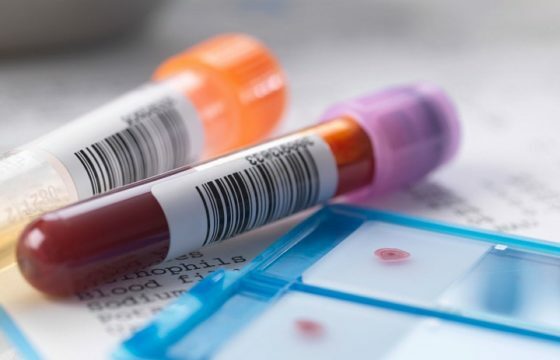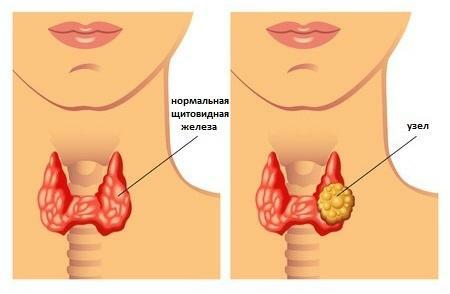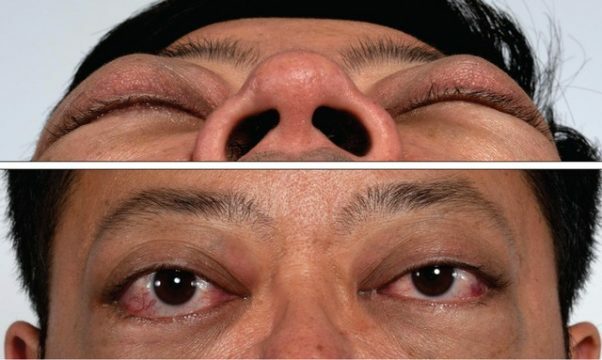Endocrine diseases have recently been marked by marked growth. There may be many reasons for this phenomenon, but the consequence is a more frequent visit to the ultrasound examination room to examine the thyroid gland for neoplasm. So, individual patients on ultrasound can face a diagnosis of a hypoechoic thyroid nodule.

Study of thyroid
In order to give the most accurate assessment of the revealed nodes, it is necessary to take into account other parameters( shape and contours of neoplasm, presence of cystic cavities, various kinds of inclusions, etc.).Just the presence of a node in the pictures does not make it malignant or benign. Criteria for this assessment is only a doctor, so you do not need to sound an alarm if you see the results of ultrasound "hypoechoic node in the thyroid gland."
Such a diagnosis can not be called cancer until the results of a puncture biopsy are obtained. After this, it will be already possible to give an accurate estimate of the detected tumor. And now we will consider what it is in general.
Hypoechoic formation of
In the ultrasound images, a specialist can detect some changes in the thyroid gland that have a nodular or fluid structure. They are called nodes. Hypoechoic formations on the images look darker than the surrounding tissues. As a rule, they have clear outlines, and when palpated, they feel like seals.
Most often, such nodes mean benign formations that are not dangerous to human life. In 5% of cases, cancer is diagnosed. The node itself is one of the symptoms of an already existing disease.
Causes of
The factors leading to the formation of a hypoechoic node include:
- deficiency in iodine;
- harmful environmental conditions( bad ecology, radiation, etc.);
- failures in cell division on the background of decreased immunity;
- swelling in the thyroid;
- violation of blood supply in certain tissues of the gland;
- frequent stressful situations;
- glitches on the hormonal background;
- heredity.
It should be understood that the impact of one factor will not lead immediately to the appearance of a tumor in the thyroid gland and, even more so, cancer. The appearance of nodes is always influenced by a complex of causes, which are expressed in previous diseases. Such changes in the thyroid structure can result in a number of autoimmune diseases, various types of goiter, cyst, adenoma or malignant tumor.
Symptoms of
The possibility of curing cancer, which was the cause of the formation of hypoechoic nodes, is often affected by timely recognition of the disease. Therefore, it is very important to apply immediately to an endocrinologist when certain symptoms appear, which usually immediately sends to the ultrasound of the thyroid gland.

Seek expert advice if the following symptoms occur:
- is constantly shivering in the hands;
- frequent headaches;
- weakness in the morning;
- pain when swallowing;
- frequent changes in blood pressure( upward);
- sudden changes in body weight;
- decreased memory and general level of mental activity;
- depression;
- increased sweating( especially at night);
- insensitivity to heat;
- malfunctions of the menstrual cycle in women;
- infertility.
In case you have more than one of these symptoms, you should definitely contact the endocrinologist. He will send for ultrasound, and also appoint a number of additional tests to exclude thyroid disease.
Diagnostics
As mentioned above, the main way to identify nodes in the thyroid gland is an ultrasound scan. Precedes this, as a rule, palpation of the body by a specialist. In this procedure, significant seals can be identified. Smaller are seen only on ultrasound images. From their size, contour( clear, blurred or diffuse) depends on further treatment.

After detection of sites of significant size, a biopsy is usually given. This allows you to exclude or confirm cancer. Biopsy results already determine the main strategy of therapy. In addition, the patient can be referred for blood tests, urine, cytology and X-rays.
Treatment
The treatment method is determined by an endocrinologist based on the results of the tests and manipulations performed. In this regard, there are two options: drug therapy and surgery.
- Drug therapy
This type of therapy is the most common for use in cases of detection of hypoechoic nodes, since they usually do not pose a danger to the life of the patient. The use of medications is indicated in cases where the neoplasm is not large, and their appearance is associated with a disease that can be completely cured with medicines. To such cases it is possible to carry:
- Detection of the node in sizes from 3 to 4 mm.
Such formations can not be treated because they are considered only modified follicles. This phenomenon is observed against the background of hormonal failures and other things. The main purpose in these cases is the use of iodine. Monitoring of changes in such formations is carried out through ultrasound( usually six months to a year after detection).
- Detection of the node from 4 mm.
When such small formations are found, iodine-containing and, if necessary, hormone therapy is used. Control over the changes occurs with the help of ultrasound, as well as blood tests for the maintenance of thyroid hormones. The main observation is carried out after changes in the tissue structure of the gland( do not appear fuzzy contours, which can be observed in cancer).

- Detection of the inflammatory process in the tissues of the thyroid gland.
In this case, the doctor prescribes antibiotic therapy together with the use of iodine-containing drugs.
- Detection of a node up to 3 cm.
Chemotherapy and radiation therapy can be used to treat such a neoplasm, if necessary.
Surgical intervention
In exceptional cases, a surgical technique is used to remove or reduce the size of the node. So, the operation is carried out when the size of the formation exceeds 3 cm or it interferes with the normal functioning of the organs and vessels nearby. Operative intervention is recommended in cases of malignancy of the node.
A possible option is sometimes the so-called sclerotherapy, in which the contents of the cysts are sucked out by a special needle. After this procedure, the walls of the site are additionally sclerosed with alcohol.
Most of thyroid gland diseases respond well to drug treatment and do not pose a great danger to human life. The main question - whether there is cancer - is solved by conducting a biopsy. If the neoplasm is not too large and does not interfere with the normal functioning of the thyroid gland, then surgical intervention will not be prescribed.




